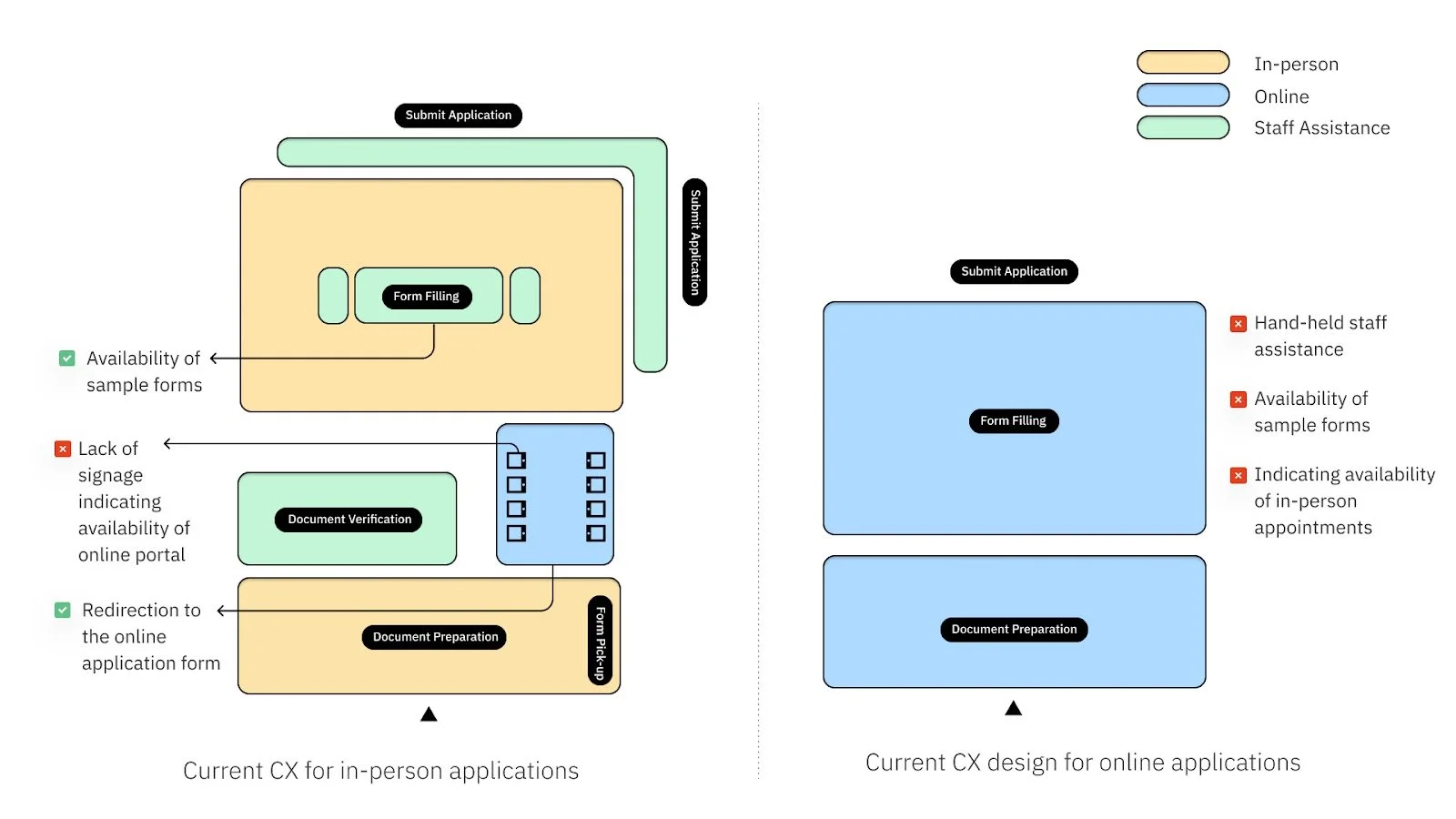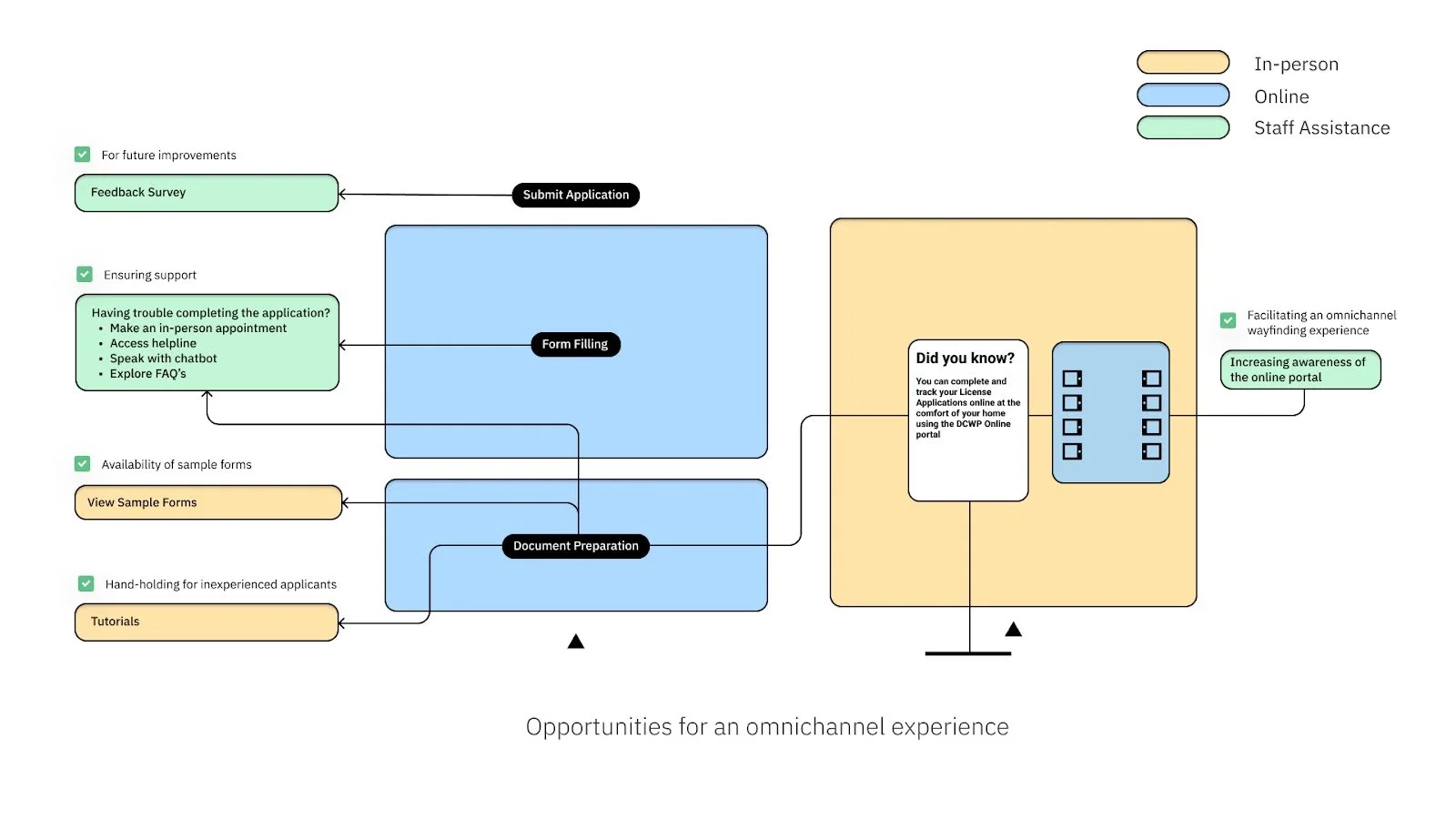
NYC Department of Consumer and Worker Protections (DCWP)
Whatever it is, the way you tell your story online can make all the difference.
My Roles
Researcher
UX Designer
Teammates
Esha Mohol
Venkateswara Rao Appalabattula
Project Duration
16 Weeks
Introduction
The New York City Department of Consumer and Worker Protection (DCWP) works to enhance the economic lives of New Yorkers. It regulates over 45,000 businesses across 40 industries and enforces consumer protection, licensing, and workplace laws. The DCWP’s goal was to foster a fair marketplace by supporting businesses, resolving complaints, and guarding against predatory practices.
In May 2023, the License Registration Portal was launched on the DCWP website. This online portal utilized web-based forms to make license registration more accessible. Our project aimed to enhance this portal’s user experience for preparing and completing their license registration online. We identified issues and opportunities to improve the portal’s discoverability and usability. The findings and design solutions from our study were utilized by the IT, Communications, and Marketing departments, as well as the Deputy Commissioner, to improve outreach and development.
The project was executed keeping in DCWP’s business objective to increase online licensing registrations. Our research indicated that this would, in turn, reduce the time it took new and renewing licensees to obtain a license. The project identified problems, researched user preferences, and developed recommendations to increase online licensing transactions. This was accomplished by addressing user needs and improving user satisfaction.
Project Objective, Research, and Design Questions
Objective
Evaluate the overall experience of applying and / or renewing a DWCP license via the license registration portal and propose design recommendations for improved usability and streamlining the application process.
Research Opportunities
Uncover pain points in current portal
Research user mental models
Identify information needs
Evaluate feedback mechanisms of the current portal
How Might We…
Streamline user flows for a simpler license application process, minimizing potential frustrations?
Align the portal with users’ mental models to facilitate more successful online license applications?
Enhance users’ comprehension of the license application process and improve visibility of portal functionalities for easy information access when needed?
Methodologies
Stakeholder Interviews
Conducted in order to comprehend the benefits of in-person visits when applying or renewing business licenses, and to identify potential areas for design improvements.
Additionally, we sought to understand the holistic experience of License Officers in order to better grasp common challenges and issues they face.
Observational Study
This method was employed to gain insights on how in-person visits influence the user experience during the license application or renewal process.
We also compared the in-person application process with the online application to identify disparities in the customer experience.
Content Audit
Conducted to evaluate the information hierarchy for easy navigation, assess the content flow for clarity, and review category-specific registration requirements.
This comprehensive audit aimed to ensure that the content was user-friendly and effectively communicated the necessary information.
Cognitive Walkthrough
This methodology was used to evaluate the system’s learnability for new users.
It involved experts assessing the interface from a user’s perspective in a structured manner, providing insights into potential usability issues and areas for improvement.
Usability Testing
Participants perform specific tasks to test out user flows. The aim was to uncover user mental models, information gaps, and pain points.
As this methodology is largely qualitative, we found that conducting up to 5 tests helped to uncover approximately 85% of usability issues, after which the patterns tend to repeat.
Findings & Recommendations
Need for Customer Segmentation
Based on user and staff interviews, we recognized the need for customer segmentation based on their licensing experiences and tech savviness to identify how to serve each group best.
The following matrix illustrates how we identified user archetypes based on their licensing expertise and tech savviness and notes how having guidance available on the platform would support each group:
Preparing to Apply is the Hard Part
During interviews with licensees, they commonly expressed that gathering all of the necessary documents was the most difficult part of applying and renewing.
While the current portal aims to prepare users for the online application using a “requirements checklist” page, we noticed certain pain-points in this experience where uses can discover the functionality of the portal in order to effectively utilize it to their advantage:
Errors signing up/in
Ensuring that their form-filling progress can be saved
Overwhelmed by instructions and information on the Requirements Checklist page
Omnichannel Thinking: Bridging the Gap Between the Online and In-Person Licensing Experience
We found that the in-person application process mirrored the online portal but noticed differences in customer experience between the two. Different customer segments required varying levels of guidance, indicating a need for a unified customer journey.
We proposed a design strategy to streamline the experience across all channels, helping us pinpoint opportunities for users to find different pathways to finish and submit their application. We’ve compared the current gaps and our proposed strategies in the figures below.






